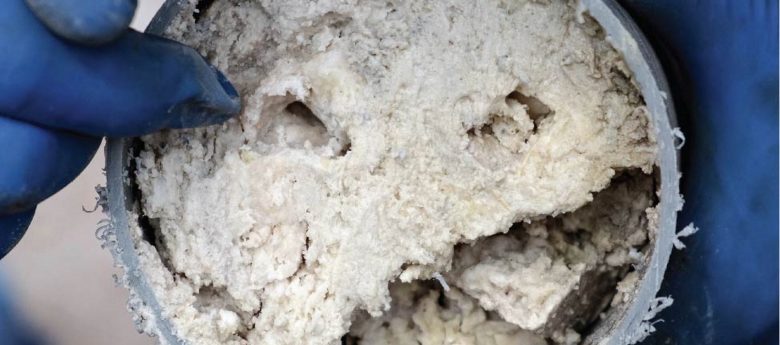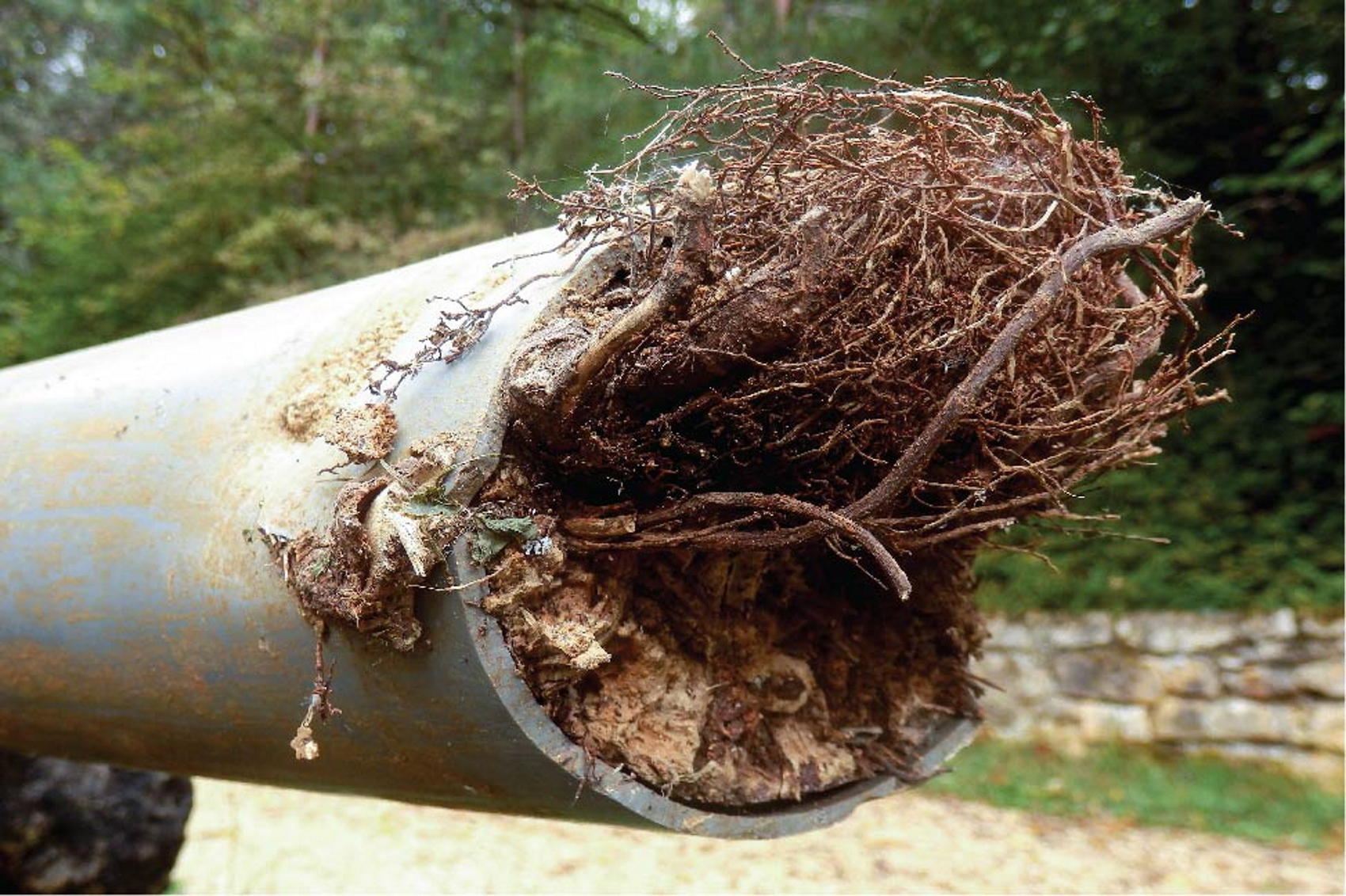Tips for Successful Sewer System Maintenance

A sewer system maintenance program works against the age-old mantra “out of sight, out of mind” by requiring watchful eyes on piping and drainage systems. These vital systems stay hidden from plain sight, as you maneuver through daily tasks. More often than not, a malfunction occurs due to a lack of awareness of underlying issues, disrupting the efficiency of your plumbing system.
Costly repairs become inevitable, whether a backup in a toilet results in foul odors or an overflow on a higher floor causes flooding and health hazards. A proactive rather than a reactive approach using routine maintenance of your piping and draining system can prevent mishaps in your sewer system.
Start by thoroughly researching your drain systems. If available, look through your facility’s blueprints and plans to determine what pipe sizes and types are used. Your highest priority is ensuring and maintaining system performance, and an efficient maintenance program will do just that.
As part of a proactive approach to sewer maintenance, regular preventive drain cleaning aids in eliminating potential build-up within your pipes. While your drains may appear to be functioning efficiently, various techniques can be applied to avoid clogs and possible malfunction.
Let’s explore common drain maintenance best practices.
- Grease Trap Cleaning
Routine grease trap maintenance plays a vital role in the efficiency of a sewer maintenance system, mitigating the risk of sanitary sewer overflows that pose hazardous public health risks and potential damage to your facility. Small in stature, grease traps collect grease more frequently, requiring monthly maintenance.
Consider using a flow-improving product to limit grease buildup in your sewer lines. Drain and waste system cleaners will liquify and disperse grease, soap, and other organic wastes that can lead to blockages and system failures. Opt for a cleaner that is non-acid and with a biodegradable formula that dissolves, deodorizes and controls build-up.
A general rule of thumb for larger outdoor grease interceptor maintenance involves regular cleaning every one to three months. Legal regulations can vary across states, cities, etc., so check with your local governing agency to stay in compliance.
However, abide by the One Quarter Rule for routine maintenance: If one fourth of a grease trap is filled with fats, oil, and grease, or FOG, cleaning must be performed. At this FOG level, the efficiency of the trap declines, resulting in malfunction, foul odors, slow drainage, and impending blockages.
High usage may result in monthly maintenance, depending on usage. If usage is light, you may reach three months before the trap hits the one fourth capacity mark; therefore, requiring maintenance.
Grease interceptors require professional-level maintenance skills for FOG removal. Using a large hose, these technicians remove existing FOG and clean the grease interceptor itself to ensure no blockages exist, maintaining the efficiency of your sewer system.
- Drain Maintenance and Cleaning Chemicals
Today’s maintenance professionals can choose from a range of drain cleaners to help prevent blockages, clean and deodorize all parts of a drainage system, and remove a particular clog.
Commercial / Foodservice Maintenance: When it comes to commercial food applications, certain products provide drain-cleaning properties that can control odors with grease and waste digesting bacteria. Such products offer biodegradable grease and soil removers that move the FOG out of your drainage system.
Opt for a bioactive chemical that does not contain any acids, caustics, solvents or other harsh or harmful ingredients. You can use this type of drain-cleaning chemical to eliminate odors on surfaces; or as a cleaner, degreaser and emulsifier during mechanical snaking. Other products use solvents to safely liquefy and disperse grease, soap scum, food residue, sludge and other waste build-up.
To clear a clog, opt for a drain cleaner that is formulated to specifically attack clogs caused by the build-up of fats, grease, and food particles usually found in kitchen drains.
Be sure it is also safe for garbage disposals and will eliminate the smell of leftover food in a DWV (drain, waste, and vent) system.
Bathrooms: Drain maintenance in commercial-bathroom applications requires a more aggressive approach. In urinals, salt and minerals from urine will build up over time. Calcification occurs within the urinal and its small-diameter (1-½” to 2 inches) drainpipe, causing blockages.
Applying drain-cleaning chemicals once a month through the entry point of the urinal drain will remove existing blockages while preventing potential clogs. Certain drain and waste system cleaners use hydrochloric acid that contains corrosion inhibitors to dissolve deposits of carbonates, sulfates, phosphates, oxides, urinary salts, and mineral deposits
To open a clogged drain quickly and effectively, a specific cleaner capable of dissolving each clog’s unique collected matter should be used. Opt for a drain cleaner that is ideal for bathrooms, because it will be formulated to eradicate clogs containing hair and soap scum.
- Hydro-Jetting
Sewer jetting is another common practice to clear clogged sewer lines. A nonchemical-related maintenance solution, hydro-jetting uses highly pressurized water to dislodge and remove FOG or any blockage within your drainage and sewer pipes.
Within the pipe system, a designated section of the line – referred to as the cleanout – provides access to your drainage system. A nozzle and hose are connected securely to it. If the cleaning is done by a trained professional, the appropriate amount of pressurized water will be applied with no damage to the pipe itself. Not only are pipe obstructions removed, but pipes are also left free of any debris that might create build-up over time.
It is advised to perform hydro-jetting every 18-22 months for routine maintenance.
- Root Cutting for Root Intrusion
In older clay sewer lines, drain sections were connected by inserting a non-bell (hub) end of the pipe into the hub of the next pipe section and filling the gap with concrete. With time, the concrete deteriorates. Roots then grow through the openings and expand, damaging the piping. Roots can also grow through partially collapsed pipes or even rotted-out cast iron. The sanitary system will shut down if a sewer line has a large root blockage.

Once severe root activity is identified within the sewer line, the roots must be removed with a mechanical, root-removal tool. Cutters, nozzles, cable machines and jetters are often needed for severe blockages.
Snaking the line with a root cutter is one of the most common ways to remove roots. But be sure the heads and bits used on the ends are specifically designed for cutting out roots. Some heads can expand to adjust to the exact inside diameter of the pipe, completely cutting the roots down to the inside face of the pipe.
Be sure to hire a professional every couple of years to inspect your main line for any root blockages. If you suspect significant root intrusion, inspect this line every six months. If you have a root blockage, the professional will likely recommend a maintenance solution.
Because this formula reacts with water, the drain line, if completely blocked, will need to be mechanically opened (snaked) to allow water flow. Once the line is open, the service tech can apply Root Destroyer at or near the root clog’s location.
It’s important to understand that while chemical treatments, if used consistently, will kill roots and prevent them from growing, they won’t immediately solve the problem. First, it is necessary to mechanically clear the blocking after root intrusion is identified to ensure that chemicals can effectively flow through the sewer line and adhere to the root mass.
Safety First
As with any work that risks exposure to chemicals or waste, the proper safety equipment is vital to your health and safety.
- Safety glasses or goggles: Prevent injury to your eyes from harmful liquids or debris by wearing safety glasses or goggles when performing any step-in sewer-system maintenance.
- Gloves: Nitrile gloves will protect your skin from hazardous chemicals or germs. Textured gloves allow a firmer grip on any cable. Often, professionals will layer both with the textured glove on top of the nitrile gloves for protection.
- Boots: Proper footwear ensures further protection. Rubber boots are highly recommended.
- Drop cloths: To protect the surfaces around the pipes, place drop cloths strategically in the area. Ensure a clear path is made from the entryway to the drain-access point to ensure equipment can be transported safely.
Applying these proactive measures to your sewer-system maintenance program not only ensures efficiency, but it also offers cost and time savings often correlated with system malfunction, while extending the life of your drainage system.
Sean Comerford is a Technical Applications Manager at Oatey Co. He is a third-generation tradesman with nearly 20 years of plumbing experience, including serving as the lead plumber for commercial/residential new-construction, service and fire protection jobs. He holds a State of Ohio Fire Protection License for Sprinkler and Standpipe.
